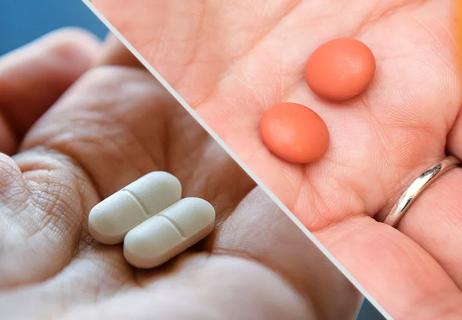Advertisement
A little can help, too much can hurt

An espresso. A pumpkin spice latte. A can of soda. A spot of tea.
Advertisement
Cleveland Clinic is a non-profit academic medical center. Advertising on our site helps support our mission. We do not endorse non-Cleveland Clinic products or services. Policy
If you have chronic migraines, you’ve probably tried to avoid caffeine at all costs for fear it could trigger a migraine.
But does caffeine actually help migraines?
Yes and no, so don’t put your coffee mug away so fast. It all depends on how much caffeine you consume.
Headache specialist Emad Estemalik, MD, explores the complicated relationship between migraine and caffeine and offers some practical advice on how to have your coffee and drink it, too.
Research shows that for people who experience episodic migraines (defined as 0 to 14 headaches a month), one to two servings of caffeine may limit headache occurrence throughout the day.
For regular caffeine consumers, one to two servings — that’s 8 ounces (oz.) of coffee, 6 oz. of tea, 12 oz. of soda, or 2 oz. of energy drink — had no effect on migraines on the same or following day.
Caffeine reduces inflammation, which can help with migraine pain.
While caffeine can be beneficial when kept under two servings per day, once you reach three or more servings, that’s where you can run into trouble.
Caffeine is a diuretic, which can make you urinate (pee) more. And drinking too much caffeine can lead to dehydration, as well as loss of magnesium, from frequent trips to the bathroom. Both those factors can trigger a migraine.
Advertisement
And it’s important to note that drinking too much caffeine can turn those episodic migraines into chronic migraines (defined as 15 or more headaches a month).
If you regularly consume caffeine and then go a day or two without it, you can go through caffeine withdrawal. One of the symptoms of caffeine withdrawal can be migraines.
Caffeine constricts the blood vessels in your brain, but once you stop consuming caffeine, those blood vessels open back up, and that can lead to pain.
Research shows that caffeine withdrawal symptoms typically start within 12 to 24 hours after you stop consuming caffeine and that they can last anywhere from two to nine days.
Some pain relievers like Excedrin® Extra Strength and Excedrin® Migraine contain caffeine.
According to research, caffeine can help increase how well medication is absorbed, which can provide relief a lot faster.
But it’s a slippery slope. If you take too many pain relievers that have caffeine or use it too often, you may experience a medication overuse headache.
So, how much caffeine is too much? And what can you do to make sure you don’t consume more than advised?
“The biggest thing to be aware of is the serving size of caffeinated beverage you are consuming,” says Dr. Estemalik. “Drinking one venti at Starbucks is far different than drinking one tall.”
So, be aware of the amounts of caffeine in the serving sizes of drinks. Try to limit yourself to 150 to 200 milligrams each day. That’s about one to two cups of regular coffee.
And don’t think that you’re in the clear if you drink decaffeinated coffee. There’s still a small amount of caffeine in those products, so if you’re really sensitive to caffeine, you may also want to avoid decaf.
But of interesting note, if you’re traveling, know that you might be able to enjoy two cappuccinos instead of just one. The amount of caffeine in beverages in the U.S. is usually higher than in other countries.
While most people can consume about 400 milligrams of caffeine without any concerns, if you deal with migraines, it’s important to watch your caffeine intake and take note of any migraine symptoms you feel.
Work on cutting back (do so slowly to limit the effects of caffeine withdrawal) or staying consistent with your caffeine to prevent an episode.
And if you have additional questions about migraines and caffeine, Dr. Estemalik advises talking to your healthcare provider, who can offer some guidance on chronic migraine treatments.
Advertisement
Learn more about our editorial process.
Advertisement

Pressing a glass on a rash provides some clues, but it’s not foolproof

Stretching, water-based activities, cycling and treadmill training can all bring benefits

There’s no proven way to remove the natural stimulant from your body, but you can counter its effects by staying hydrated and getting in some movement

An occasional shopping spree can boost your mood by distracting you from stressors and pumping your brain full of ‘happy hormones’

Imagination, completing tasks and social interactions are all key benefits for your brain

Find a psychiatrist or psychologist in your area who works with autistic adults — or reach out to a pediatric specialist if you can’t find one

If you’re frequently dealing with short-term memory loss, confusion or issues around spatial awareness, you may need to see a neurologist

Alzheimer’s is just one common cause of cognitive decline categorized as ‘dementia’

When you get bogged down with mental tasks, you can experience mood changes, sleeplessness and more

You can alternate these OTCs to help with pain management and fever reduction

Non-exercise activity thermogenesis is all the activity we do that’s not technically exercise but is still important to your health and well-being